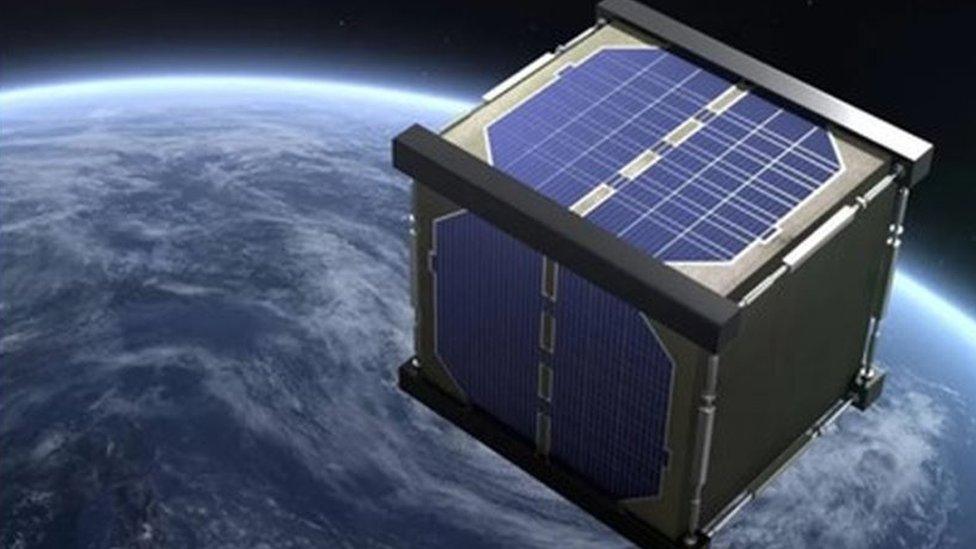LignoSat probe: Kyoto scientists plan to send wood satellite into space
- Published

Scientists in Japan have built a satellite made from wood.
The LignoSat probe, designed by researchers at Kyoto University, is made from magnolia wood.
The wood was tested out for a year at the International Space Station (ISS) and was found to be super stable and crack resistant.
Now plans are being finalised for the hand-sized timber satellite to be launched on a US rocket this summer.
Why build a wooden satellite?
Kyoto University and Sumitomo Forestry in Japan have been testing natural materials, such as wood, as environmentally-friendly replacements to metals currently used for satellites.
Takao Doi, a Japanese astronaut and aerospace engineer at Kyoto University told the Observer: "All the satellites which re-enter the Earth's atmosphere burn and create tiny alumina particles, which will float in the upper atmosphere for many years.
"Eventually, it will affect the environment of the Earth."
Original designs for the world's first satellite made out of wood from Sumitomo Forestry
Recent research from the University of British Columbia, in Canada, shows that aluminium like this is a risk to the ozone layer- which protects the Earth from the Sun's harmful radiation.
After testing the wood on Earth the researchers at Kyoto sent samples to the ISS for a year.
The scientists found there was very little damage to the wood from the ISS because there is no oxygen to burn it or living things in space that would ordinarily cause it to rot.
Different kinds of wood were tested but magnolia came out on top and has now been used to build Kyoto's wooden satellite.
The wooden satellite during prototype testing phase
"Wood's ability to withstand these conditions astounded us," said Koji Murata, head of the project.
The team are now deciding how the satellite will be launched into space - most likely via the Orbital Sciences Cygnus supply ship to the ISS this summer or a SpaceX Dragon mission later in the year.
The satellite will contain a number of experiments that will determine how well it works in orbit, Murata says.
If LignoSat is a success this could mean wood gets the go-ahead as a way to build satellites of the future.
- Published28 August 2023
- Published23 October 2021
- Published5 February
